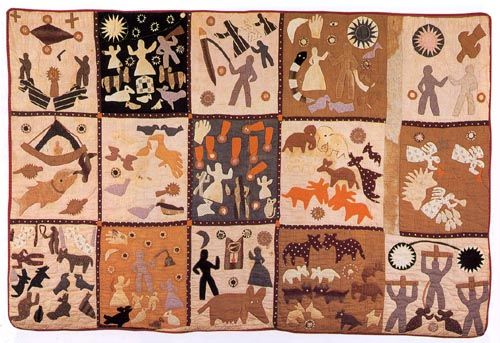What We Review
Creating African American Culture
African American culture is a rich tapestry of traditions, stories, and artistic expressions shaped by the blend of African, European, and Indigenous influences. This unique cultural mosaic developed under challenging circumstances and continues to inspire people today. Cultural expression has always been essential in forming individual and communal identities, enabling African Americans to maintain their heritage while adapting to a new environment.
Below is a closer look at the influences behind African American culture, the evolution of language and music, and how visual arts—like quilt-making—helped preserve history. Understanding these traditions highlights how African Americans forged vibrant communities and impacted the broader American identity in profound ways.
Influences on African American Culture
African American cultural expressions arose from a meeting of different worlds. People from West and Central Africa arrived in North America with their own artistic styles, music, and beliefs. However, they also encountered European customs and Indigenous traditions. As a result, both conflict and cooperation shaped the way African Americans adapted and blended these influences.
- African: Drums, storytelling traditions, call-and-response singing, and communal crafts.
- European: Techniques for farming, European languages, and Christian hymns.
- Indigenous: Knowledge of local plants, natural resources, and regional art styles.
These creative fusions led to new forms of expression in music, art, and language. For example, local pottery incorporated African design elements, and quilt-making used both African and European sewing techniques. Therefore, African Americans embraced a multicultural foundation that gave birth to lasting art forms still recognized today.
Language and Communication
Language played a crucial role in preserving cultural identity. Enslaved Africans often spoke multiple languages, a skill they had gained through long-distance trade in Africa. In the Americas, they faced the challenge of communicating with people from diverse backgrounds. Therefore, African Americans combined different dialects to form creole languages, such as Gullah.
What Is Gullah?
Gullah is a creole language that developed primarily among African Americans living in coastal regions of South Carolina and Georgia. It combines elements of West African languages with English. This language allowed enslaved communities to share their stories, traditional beliefs, and knowledge, while also forming a network for survival. Over time, Gullah culture extended beyond language, influencing cuisine, storytelling, and religious practices.
Communication was not limited to spoken language. Spirituals, coded quilt patterns, and oral traditions were used to send clandestine messages and share histories. These tools often helped enslaved people resist oppression and preserve their cultural heritage.
Musical Heritage
Music has always been vital in African American culture. Enslaved people adapted African instruments like rattles made from gourds and developed the banjo, echoing similar West African stringed instruments. By blending African rhythms with European folk and religious songs, African Americans forged new musical genres that continue to shape American music.
African American Gospel Hymns and Blues
- Gospel: Rooted in Christian hymns blended with African performance styles. The call-and-response technique involves a leader singing a line and a group echoing it, a legacy of African communal singing. Gospel songs often contain themes of spiritual redemption and hope, making them powerful statements of faith and unity.
- Blues: Strongly influenced by West African musical systems. Senegambians and West Central Africans, who arrived in large numbers in Louisiana, combined their musical scales, syncopation, and improvisational styles with local sounds. Therefore, the blues emerged as a deeply emotional music form that resonated with the struggles and joys of everyday life.
These traditions served social, spiritual, and political functions. They not only entertained but also provided a means of resistance by embedding hidden messages of resilience and solidarity.
The Role of Spirituals
Slave spirituals, also known as sorrow songs or jubilee songs, hold a special place in African American history. These songs combined biblical imagery with coded language, enabling enslaved individuals to communicate secret plans and hope for liberation. In this way, spirituals became a tool of both faith and resistance.
Dual Meanings and Resistance
The lyrics of many spirituals, such as “Steal Away to Jesus,” offered dual meanings. On one level, they spoke of freedom in the afterlife; on another level, they passed on clandestine messages about running away or the location of safe trails. These hidden references connected African heritage with the landscapes of America, helping enslaved communities navigate their journey toward emancipation.
Enslaved people found comfort and solidarity by singing these songs together. Spirituals affirmed their dignity and helped them envision a brighter future, despite the oppressive reality they faced.
The Artistic Expression in Quilting
Importance of African American Quilts
Quilting became another cornerstone of African American culture. By merging African-inspired motifs with European techniques, quilts evolved into powerful storytelling tools. These creations often featured vibrant colors, symbolic shapes, and appliqued designs that recorded family history, significant events, and community values.
Many scholars believe some quilt designs encoded secret information for those seeking freedom. Subtle patterns might hint at a safe passage or warn of potential dangers, just as spirituals provided coded language. Consequently, African American quilts often served a dual purpose: comforting and guiding.
Example: Step-by-Step Creation of a Simple Quilt Square
- Choose brightly colored fabrics. African-inspired patterns might resemble geometric forms or use bold contrasts.
- Cut the fabric into squares, triangles, or other shapes. Each piece can represent a family story or meaningful symbol.
- Arrange the shapes to form a design. Some quilters use patterns that recall African textiles.
- Sew the pieces together by hand or machine. This step requires patience and precision.
- Finally, add any decorative elements, such as embroidery or appliqué, to personalize the quilt.
Quilts were thus a way for communities to preserve memories, share messages, and celebrate creativity in the face of adversity.

The Impact of Cultural Practices Today
Modern African American culture still draws inspiration from these longstanding traditions. Contemporary music, including rhythm and blues and hip-hop, contains echoes of early call-and-response techniques. Similarly, African American gospel hymns continue to be a source of faith and inspiration in churches worldwide.
Quilting remains popular within African American communities. Artists build on earlier styles and incorporate new materials, enabling these community artworks to evolve and flourish. Therefore, these cultural expressions are not static relics of the past. They are living traditions, offering insight into the resilience and adaptability of African Americans across generations.
Required Sources and Their Significance
Cream and Red Appliqued Quilted Bedcover, Circa 1850
This historic bedcover demonstrates the fusion of African and European quilting traditions. Its intricate applique design reflects the skill and creativity of African American quilters. Moreover, bedcovers like this were essential household items that served both practical and artistic purposes.
Excerpt from Chapter 6 of My Bondage and My Freedom by Frederick Douglass, 1855
Frederick Douglass provided firsthand insight into the realities of enslaved life. In Chapter 6, he discusses the importance of literacy and communication, highlighting how education functioned as a path to freedom. His words underscore how African Americans used creative methods (including language, spirituals, and communal efforts) to seek liberation.
Lyrics to “Steal Away to Jesus,” Mid-Nineteenth Century
These lyrics illustrate the dual meanings embedded in slave spirituals. On one level, the words express religious devotion; on another level, they serve as a secret code for those planning to run away. This spiritual epitomizes the blend of African musical elements and Christian themes that shaped many slave songs.
Storage Jar by David Drake, 1858
David Drake’s pottery combined African-style craftsmanship with local clay techniques. He sometimes inscribed verses onto the storage jars, demonstrating artistic skill and personal expression. Such pottery pieces remind today’s audiences of how African Americans interwove African artistry with new environments, thereby maintaining cultural continuity.
Quick Reference Chart: Vocabulary and Definitions
| Term | Definition |
| Gullah | A creole language combining West African dialects with English, common in coastal South Carolina and Georgia. |
| Spirituals (Sorrow/Jubilee Songs) | Religious and resistance songs that offered hope and could carry hidden messages about escape routes. |
| Appliqué | A needlework technique where designs are sewn onto a larger piece of fabric. |
| Call-and-Response | A musical pattern in which a leader sings a phrase and a group responds, often used in gospel and blues. |
| Creole Language | A language developed from the blending of multiple linguistic influences, common among diverse communities. |
| African American Gospel Hymns | Christian hymns infused with African rhythm and performance elements, forming the basis of modern gospel music. |
| Slave Spirituals | Another term for spirituals, highlighting their origin among enslaved African Americans. |
| African American Quilts | Quilt-making traditions that incorporate African influences and storytelling, sometimes including coded messages. |
Conclusion
Understanding African American culture requires recognizing how people of African descent blended their ancestral heritage with elements of European and Indigenous traditions. Language, music, visual arts, and communal practices all reveal the resilience of African Americans in preserving their identity. The journey from African-inspired drumbeats to the evolution of gospel and blues illustrates the power of adaptation, while spirituals and quilts show the creativity and determination of communities facing oppression.
These cultural expressions still thrive today. They inspire new generations of artists, musicians, and historians, who continue to explore and expand upon their rich legacy. Therefore, studying African American culture is crucial for appreciating the depth and diversity of American society.
Sharpen Your Skills for AP® African American Studies
Are you preparing for the AP® African American Studies test? We’ve got you covered! Try our review articles designed to help you confidently tackle real-world AP® African American Studies problems. You’ll find everything you need to succeed, from quick tips to detailed strategies. Start exploring now!
Need help preparing for your AP® African American Studies exam?
Albert has hundreds of AP® African American Studies practice questions, free response, and full-length practice tests to try out.









